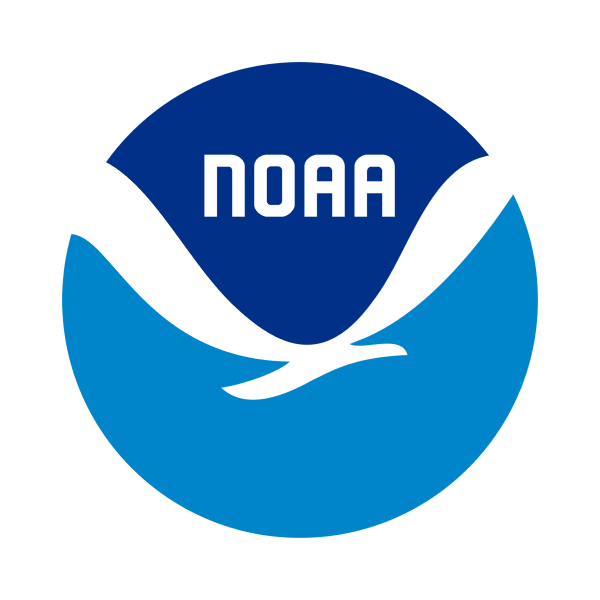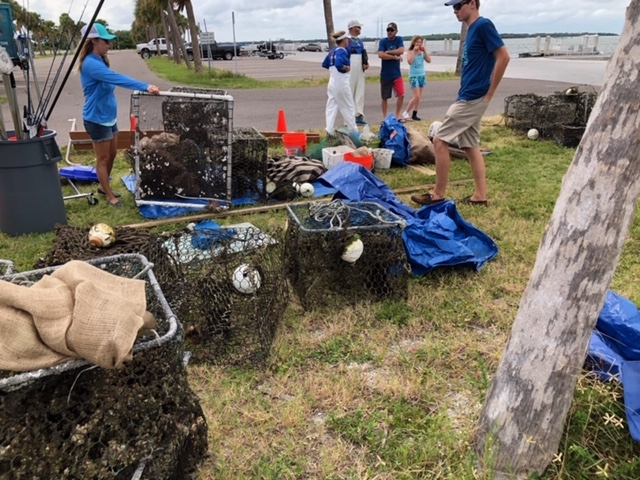Ocean Aid 360 and Coastal Conservation Association Florida conducted awareness campaigns and weekend-long marine debris removal competitions, called Ghost Trap Rodeos, in Florida’s Tampa Bay estuary. During the removal activities, Ocean Aid 360 and event participants collected data on the species removed from the crab traps and fishing gear.
Type of Project: Removal
Region: Florida
Project Dates: August 2018 – July 2019
Who was involved?
With support from the NOAA Marine Debris Program, Ocean Aid 360, in partnership with the Coastal Conservation Association Florida, mobilized boaters, anglers, and industry members to detect and remove derelict crab traps and other fishing gear from Florida’s Tampa Bay estuary.
What was the project and why is it important?
In Florida, hundreds of thousands of crab and lobster traps are fished annually. Tampa Bay is home to a vibrant crab fishery, for both stone crabs and blue crabs. Both recreational and commercial participants experience occasional trap losses due to a variety of potential factors including intentional abandonment, storms or severe weather, entanglement with other fishing gear, or buoy lines cut by passing boats. Once left in the environment, derelict traps can continue to capture marine animals—a phenomenon called ‘ghost fishing.’ At the time of the project, best estimates put Tampa Bay's number of active ghost traps somewhere near 10,000 traps. By continuing to entrap and entangle both target and non-target species, derelict crab traps can cause economic losses for fishermen and harm to Tampa Bay’s natural resources.
Through this project, Ocean Aid 360 conducted awareness campaigns and a Ghost Trap Rodeo event series, comprised of six weekend-long marine debris removal competitions. The Ghost Trap Rodeo events are organized like shallow water fishing tournaments, but instead of weighing in fish, event participants weighed in abandoned crab traps, fishing gear, and other forms of marine debris. The event series was an opportunity for knowledgeable local anglers and boaters to come together and launch their vessels and paddle-craft in search of these ghost traps and other types of marine debris. During removal events, participants became citizen scientists by collecting data on the species removed from the derelict crab traps and fishing gear. At the end of each event, the anglers and boaters that remove the most debris had a chance at winning great industry sponsored prizes.
The Ghost Trap Rodeo series was inspired by the belief that local anglers and boaters know their local waters, and are well suited to locate and remove derelict traps and fishing gear, ultimately contributing to the conservation of a waterbody they depend on.
What were the results?
Ocean Aid 360 hosted six Ghost Trap Rodeo Events around the Tampa Bay estuary, with a bonus 7th Ghost Trap Rodeo in July 2019 during the blue crab fishery trap closure period. During these events, over 300 volunteers removed a total of 26,391 pounds of debris, including 411 derelict traps.
A species inventory report was developed based on data collected on the species removed from the crab traps and fishing gear during Ghost Trap Rodeo events. Over 900 marine animals were removed from derelict traps during the events, including 695 invertebrates, such as blue and stone crabs, and 206 fish, including pinfish, sheepshead, and snapper.
For more information about this project, visit the Marine Debris Program Clearinghouse.
 An official website of the United States government.
An official website of the United States government. 

